Types of Closures on Linen - Zipper, Buttons & Hotel Closure
Bed linen can have a wide variety of closure types. The most common are zippers, buttons and hotel closures. We will explain the advantages and disadvantages of the individual types of closures and where they are used.
zipper
Let's start with the history: From 1850 onwards, various inventors continued to develop the zip fastener. However, it was first used on a mass scale in the weatherproof suits of the US Army in 1917. From 1930 onwards, zips were also regularly used in the textile sector. Today, around 70 million linear meters of zip fasteners are manufactured in Germany alone every year. However, the world's largest producer is a Japanese company.
The zipper consists of two side parts, called staples, and a slider with which the staples can be hooked together and released again.
The zipper is valued above all for its enormous simplicity. It closes jackets, hoodies, shoes or bed linen quickly and easily. The zipper therefore has great practical advantages, especially for items of clothing that you open and close frequently during the day.
The larger the area, the more grateful you are to have a zipper.
These advantages are also very much appreciated in the everyday use of bed linen: If you want to wash the duvet cover, the zip can be opened quickly and the duvet can be taken out.
Only advantages? Not quite. Because the zipper is hard plastic or metal, it's not quite as comfortable for sleeping comfort. The durability can also vary greatly depending on the type and model, especially if the duvet cover or pillowcase is washed frequently. In addition, the zipper has the disadvantage that if a staple is defective, the entire zipper has to be replaced. Unfortunately, this often costs a lot of money and a repair is uneconomical in many cases.
Buttons
Buttons have a very long history: the first button models that were used to fasten textiles existed as early as the 12th or 13th century. Because buttons of all shapes and materials were used to connect items of clothing at that time, the button-making craft also developed over the centuries.
Buttons come in a variety of designs these days. The perforated button on Cottonbabe luxury bed linen, the rivet button on jeans or the snap button on jackets are just a few of the most common types of buttons.
The most typical shape of a button is the circle, as this is the easiest to open and close. Compared to a zipper, however, it takes a little longer to open and close textiles.
The advantage of buttons on bed linen is that they are only attached at a distance of several centimeters and therefore do not affect sleeping comfort as much as a full-length zipper. Buttons are also usually less visible, which is why they are often used on very high-quality bed linen that should also look good in terms of design. The button is also considered the most natural type of closure. If a button breaks, this is not so tragic. A new button is cheap to buy and quick to attach. In addition, the other buttons ensure a natural balance in the meantime.
hotel closure
As the name suggests, the hotel lock is mostly only used in hotels. The special thing about the hotel closure is that it is actually not a closure. The top half of the duvet cover is usually longer than the bottom half. As a result, the upper half can simply be folded over and tucked into the duvet.
But why do almost all hotels do it this way?
Duvet covers and pillowcases are washed very often due to the constantly changing guests and the hygiene in the hotel. In a professional laundry, the ironing and smoothing of fabrics is called "mangling". The bed linen is pulled between two large rollers. Buttons and zippers would be easily damaged.
In addition, removing and covering bedding with buttons or zippers would take too long. In operational hotel operations in particular, speed is of the essence when it comes to room cleaning. The hotel closure is the most efficient type of closure for this.

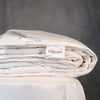
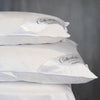

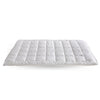

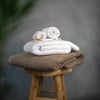

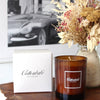





Leave a comment